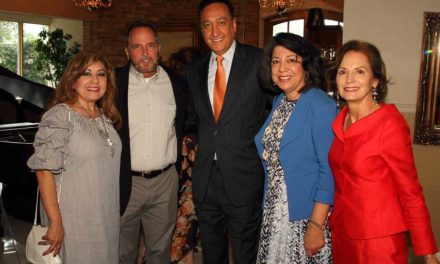The Westside Education and Training Center (WETC) in San Antonio’s historic Westside is not only a hub of education and resources but also a testament to the rich African American heritage that is often overshadowed by the area’s vibrant Mexican American community. As we delve into the history of the Westside, we discover the impact of desegregation and the importance of preserving and sharing stories of African American culture.
In 1954, San Antonio made history by desegregating its schools, following the landmark U.S. Supreme Court decision in Brown v. Board of Education. However, the story of desegregation in San Antonio begins even earlier with the case of Roberto Alvarez v. the Board of Trustees of the Lemon Grove School District in 1931. It was in this context that Lincoln Elementary School, part of the Edgewood Independent School District (I.S.D.), was established as a haven for African American and Mexican American children.
Under the leadership of Elizabeth T. Wrenn, the school’s first principal and Edgewood’s first African American teacher and administrator, Lincoln Elementary became a symbol of hope and progress. On February 13, 2024, a ceremony honoring Lincoln Elementary was brought together by the San Antonio African American Community Archive and Museum (SAAACAM) and the Alamo Colleges District. This event allowed community members to reflect on the pride and history of the Westside.
During the era of segregation, the Westside experienced an influx of black families in 1959 as a result of the requirement to repair B-52 aircraft at Kelly Air Force Base. Lincoln Elementary became a safe haven for black and Mexican American students, with an all-black faculty. Despite the boundaries that segregation imposed, the school was a tight-knit community where teachers nurtured students’ growth and instilled a sense of confidence and identity.
Assembly time, celebrations of holidays, and parent-teacher meetings were cherished moments for the students of Lincoln Elementary. The teachers’ dedication and care made a lasting impact, shaping the students’ lives and fostering a sense of belonging. The students were encouraged to believe in themselves, and the teachers’ unwavering support propelled them forward.
Although integration was a new concept, there were no confrontations or incidents in the first year at Edgewood High School. Students were allowed to join clubs and sports, breaking down barriers and embracing equity. The high school’s student council played a crucial role in advocating for all children and continues to fight for a fair and inclusive education system.
While Black History Month is a time for celebration, the panel discussion at the ceremony emphasized that every day should be an opportunity to honor and remember our ancestors’ perseverance. It is through understanding our history that we can break free from mental constraints and soar to new heights.
In the Westside community, poverty was not a defining factor. Instead, the focus was on fostering unity, respect, and a shared sense of responsibility. The unifying power of education and the love and support
within the community allowed students to thrive, regardless of their circumstances.
As we move forward, it is essential to share these stories of family, education, and resilience. By acknowledging and appreciating our past, we can shape a more inclusive future. The Westside Education and Training Center, in collaboration with SAAACAM and the Alamo Colleges District, continues to be a beacon of hope, providing resources, education, and training to empower the diverse Westside community for success.
In conclusion, the Westside Education and Training Center stands as a testament to the African American heritage and the power of education in the Westside community. By preserving and amplifying the stories of African American culture, pride, and history, we honor the past, inspire the present, and pave the way for a brighter future for all.












